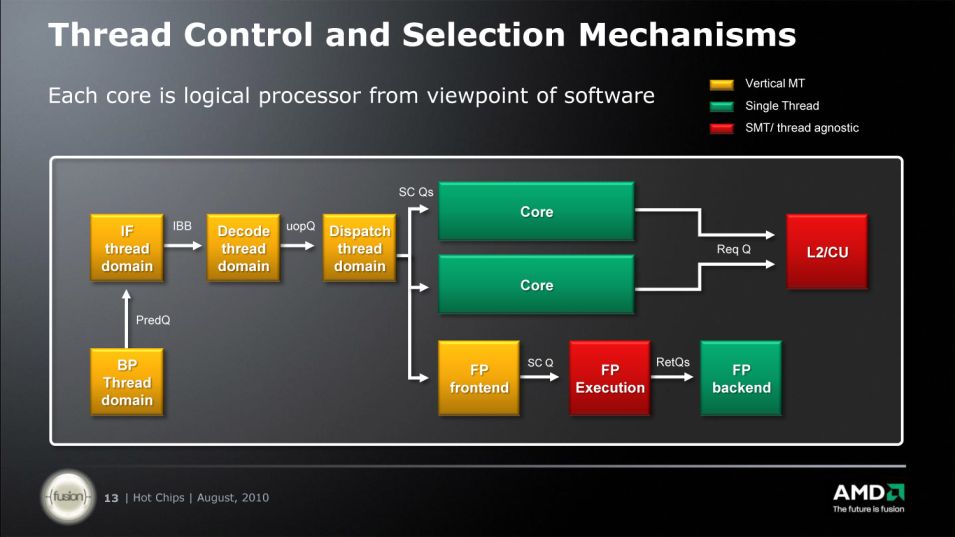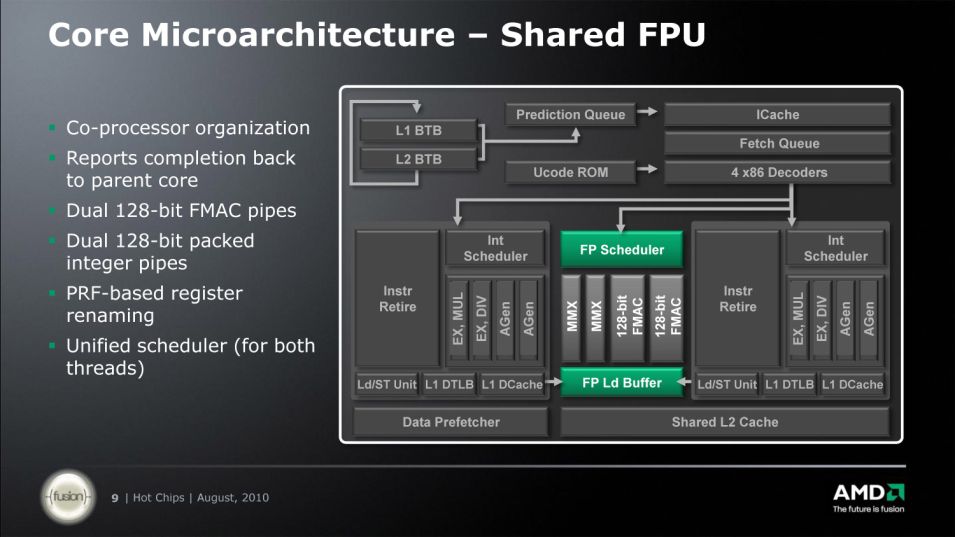Well Im hoping for midend parts that clock EXTREMELY well and for really nice prices, bringing back amazing bang for buck. Im also wondering if there will be any 4 core mid end parts that will be full fledged 8 core parts but disabled due to defects / demand, in which case if they will be unlockable or not like current X2's and so on....
This would be freakin awesome, and like I said 5.5ghz on air OC!!! OOOO that would be so nice woot!
From all we know we can really guess that AMD will put Bulldozer 8 core CPUs to compete with Intel Sandbridge 4 core CPUs. So they will be priced similar. I think AMDs strategy will be: Buy us, you get the double core count (and better overall performance therefore).
Also on the cost side it would be no problem, since an 8 core AMD costs in production around the same as an 4 core Intel.
However that AMD is reactivating FX brand and Intel priced SandyBridge that low, I expect that AMD will want to earn really money and won't make it too cheap, at least at the beginning. AMD could possibly force Intel in a price war. If you also consider, that AMD is making record investments - or better say Global Foundries does - in new fabs, they seem very confident to sell really a lot.
But far more worse the situation will get in server market, where core count is mission critical and there simply exists no important application which would not scale almost linear.
Desktop market share will be limited anyway because of AMD having not enough fabs, but in server market AMD could regain those 50% market shares, they once had with AMD64 and double core opterons. And this time this could come as well for dual or single socket servers.
We have to see, which price level they will choose and how it will develop, it will be maybe cheap regarding performance but not really cheap overall. So lets hope they ramp up more fabs and that quickly.
200 USD and below for an eight core is likly, but that is a low bin part (clock/cache) and higher clocked (FX) could reach 1000 USD.






